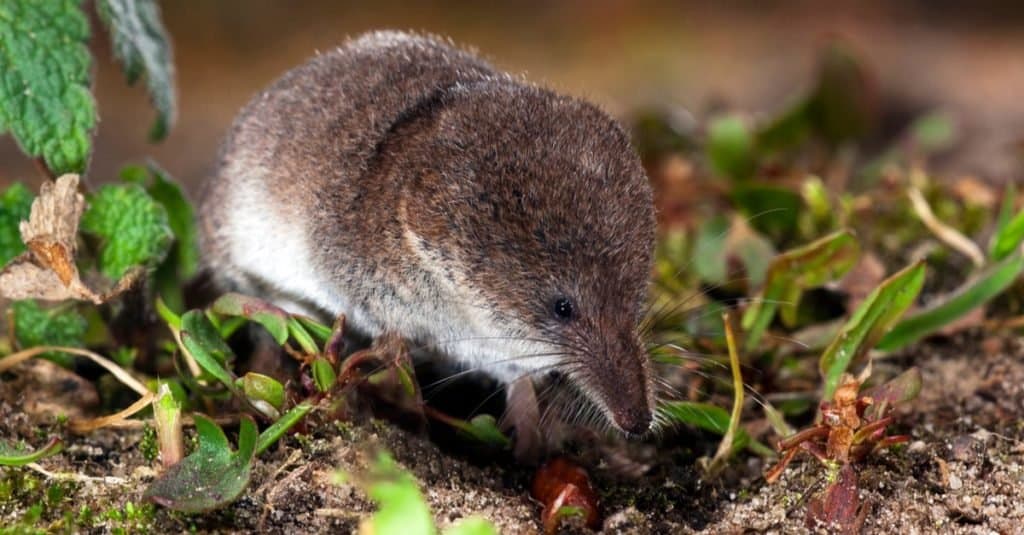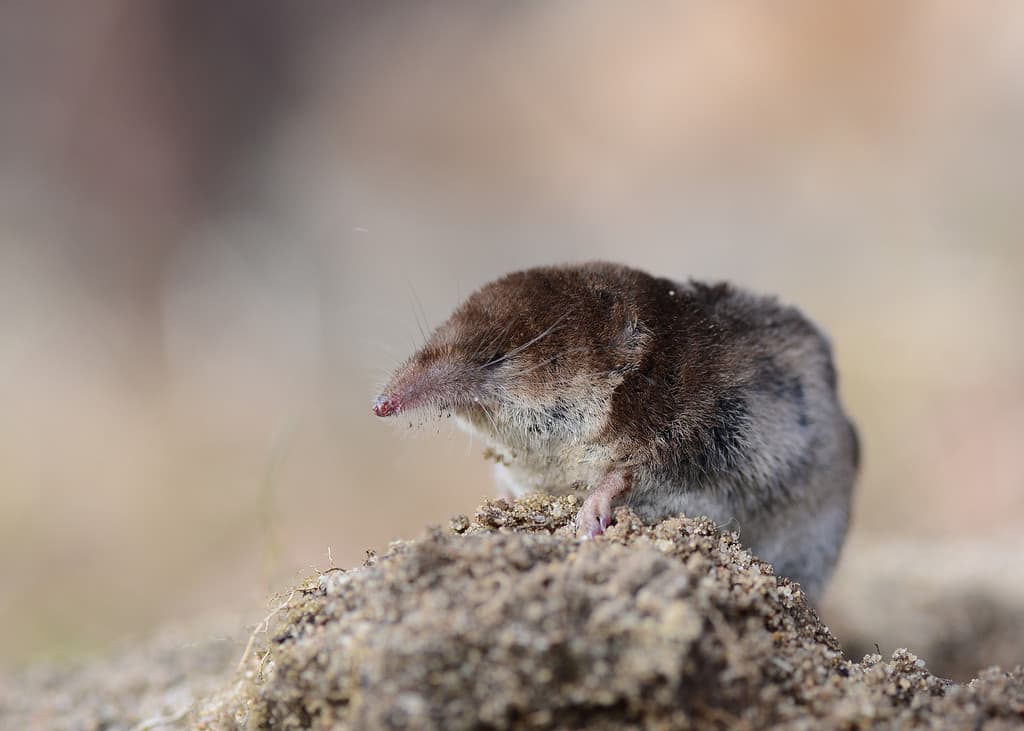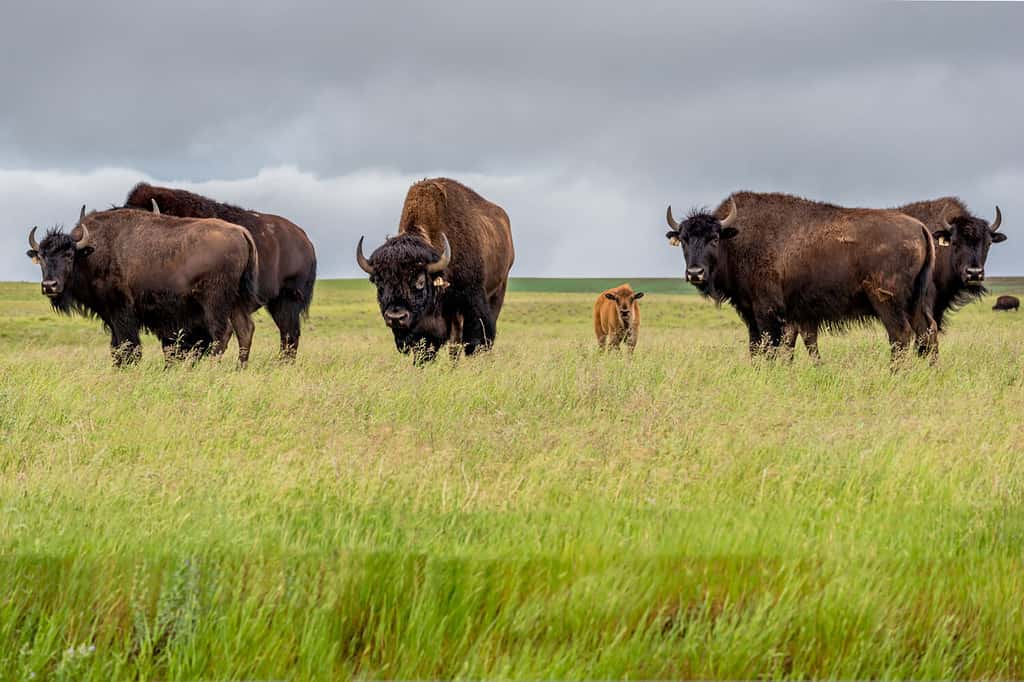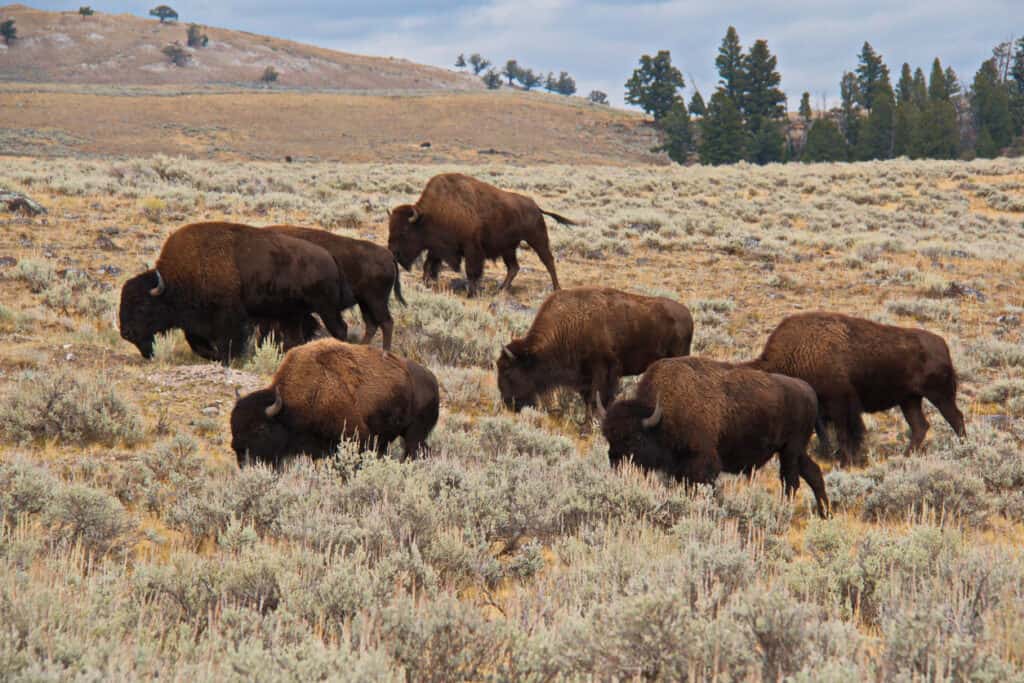Animals come in all different shapes and sizes, but sometimes the differences are astonishing. From the tiny elephant shrew to the huge African elephant, the pygmy possum to Australia’s red kangaroo, and the golden lion tamarin to the tapir in South America, nature’s size diversity is impressive. This wide span of diversity is also present in North America’s mammals, with animals ranging in weight from two grams to over a ton. But which animals set the records for size? Here are the biggest and smallest mammals in North America (and how they compare).
North American’s Smallest Mammal: The American Pygmy Shrew

A pygmy shrew’s metabolism is so high that it can die if it doesn’t eat for one hour.
©Agami Photo Agency/Shutterstock.com
Not only is the American pygmy shrew (Sorex hoyi) the smallest mammal in North America, but it is also the second-smallest mammal in the entire world. The pygmy shrew is just slightly larger than the 1.8-gram Etruscan shrew native to Eurasia.
The American pygmy shrew was first discovered in Ontario, Canada in 1831 — but they’ve been around much longer than that. Shrews evolved around 45 million years ago and have remained relatively unchanged in North America for the past 10 million years.
Appearance
American pygmy shrews have short, brownish-grey fur on their backs with white underbellies. A long, pointed snout differentiates them from members of the rodent family. They have small eyes and long whiskers, with a tail about a third as long as its body.
Size
You’ll have to look closely if you want to see a pygmy shrew! In addition to the camouflage provided by its brown coat, the pygmy shrew’s tiny size makes it hard to spot. These diminutive shrews measure just 2 inches long and weigh two to four grams (or .07-.14 ounces). This is less than the weight of a dime.

Little is known about the reproductive habits of pygmy shrews, but they may breed year-round.
©Piotr Krześlak/iStock via Getty Images
Territory
American pygmy shrews are found throughout parts of Canada, Alaska, the northern United States, and in the Appalachian Mountains. They live in forests, marshes, and bogs and prefer areas with moist soil where they can burrow and forage for food in leaf litter and dirt.
Lifespan
The lifespan of an American pygmy shrew is sadly not long. The shrew’s lifespan is one of the shortest of any mammal, at just 11-13 months. Pygmy shrew gestation lasts just 18 days, and by 18 days old the babies are considered fully grown. At 25 days, babies leave the nest and are completely independent.
Their quick lives aren’t the only thing that’s fast about them. Shrews have the fastest heartbeat of any mammal at 1,200 beats per minute. To support this incredibly fast metabolism, they must forage for food nonstop.
Diet
This constant foraging is critical because pygmy shrews need to eat three times their body weight every day. To do this, they need to eat every 15-30 minutes, so they never sleep more than a few minutes at a time. Pygmy shrews primarily eat insects, including beetles, insect larvae, spiders, centipedes, and caterpillars. They dig through soil and leaves in search of their protein-rich meals. A good sense of smell and hearing helps them ferret out their prey even in the dark. Since they are active and foraging around the clock, these keen senses allow them to find food during the night when visibility is low.
North America’s Largest Mammal: American Bison

Bison give birth to a single calf each spring.
©Nancy Anderson/Shutterstock.com
It seems fitting that the United States’ national animal is also its largest land-dwelling animal. Also known as the buffalo, the American bison (Bison bison) takes the prize as not only the largest mammal in the States but the largest in all of North America.
While it is estimated that there were as many as 30-60 million bison in North America in the 1500s, the population dropped to an alarming 325 animals in the United States by 1884. Thanks to conservation efforts implemented in the early 1900s, there are now around 20,500 bison in wild conservation herds in North America.
Appearance
It’s hard to miss a bison. These husky mammals have thick, dark fur that is longer and shaggier on the front half of their body. This extra fur on their heads, necks, and shoulders makes the front quarters of the bison incredibly well-insulated, and they will often stand facing the wind during blizzards.
Bison have a large hump over their front shoulders, which gives them a muscled look, and both males and females have short, curved, pointed horns. In the spring, they shed much of their thick winter coat for a lighter-colored summer coat. Baby bison are a yellowish-orange color until they are a few months old.
Size
Bison are not small animals. Even at birth, bison weigh over 70 pounds! Adult bison can measure up to 11.5 feet long (not including their tail) and have a shoulder height of over 6 feet. On average, bison weigh between 1,000-2,000 pounds, with males weighing more than females. This means that bison can be up to 200,000 times bigger than an American pygmy shrew! The biggest wild bison on record was a massive bull that weighed 3,800 pounds.

The U.S. National Park Service recommends staying at least 100 feet away from bison for safety.
©iStock.com/Karel Stipek
Territory
While bison used to be widespread over almost all of North America, their range has been greatly reduced. Currently, bison live in protected conservation herds across the United States, with the biggest concentration of wild animals (around 5,500) in Yellowstone National Park. While park visitors may be eager to get close to these giant animals, the U.S. National Park Service urges park guests to stay at least two bus lengths away from the unpredictable bison. This is important because bison can become defensive if threatened — and can run up to 35 miles per hour if they feel the need to charge.
Lifespan
Wild bison have an average lifespan of 15-25 years. The oldest bison on record died at age 30 in captivity at Golden Gate Park in San Francisco. The bison’s gestation period is 283 days (9.5 months) and calves are born with their eyes open and able to stand just minutes after they are born. Calves nurse for seven to eight months before weaning. Females are sexually mature and can reproduce when they are two to three years old. While males hit sexual maturity at around the same time, most bulls don’t reproduce until around six years old when they are big enough to compete with other males.
Diet
It takes a lot of food to support such big bodies, so these herbivores eat constantly. Bison forage for nine to 11 hours a day and eat leafy plants, grasses, weeds, lichens, and flowers. In a given day, a bison will consume about 24 pounds of food or about 1-2% of its body mass. When snow blankets the ground in the winter, bison will use their head and horns like a plow to move snow so that they can reach the grasses and sedge underneath.
How The Pygmy Shrew and Bison Compare
| Category | American Pygmy Shrew | American Bison |
|---|---|---|
| Appearance | Short brown fur with white underbelly, long pointed noses with long whiskers, with tails measuring 1/3 of body length | Thick dark brown fur on head, neck, and shoulders with shorter fur on hindquarters. Sharp, curved horns with humped shoulders |
| Size | 2 inches long, 2-4 grams in weight | Up to 11.5 feet long and 6 feet tall at the shoulder, 1,000-2,000 pounds in weight |
| Territory | Alaska, Canada, Northern United States, and the Appalachian Mountains in forests and moist environments | Conservation herds across North America, largest wild herd in Yellowstone National Park |
| Lifespan | 11-13 months | 15-25 years |
| Diet | Insects | Grasses and leafy greens |
Thank you for reading! Have some feedback for us? Contact the AZ Animals editorial team.








